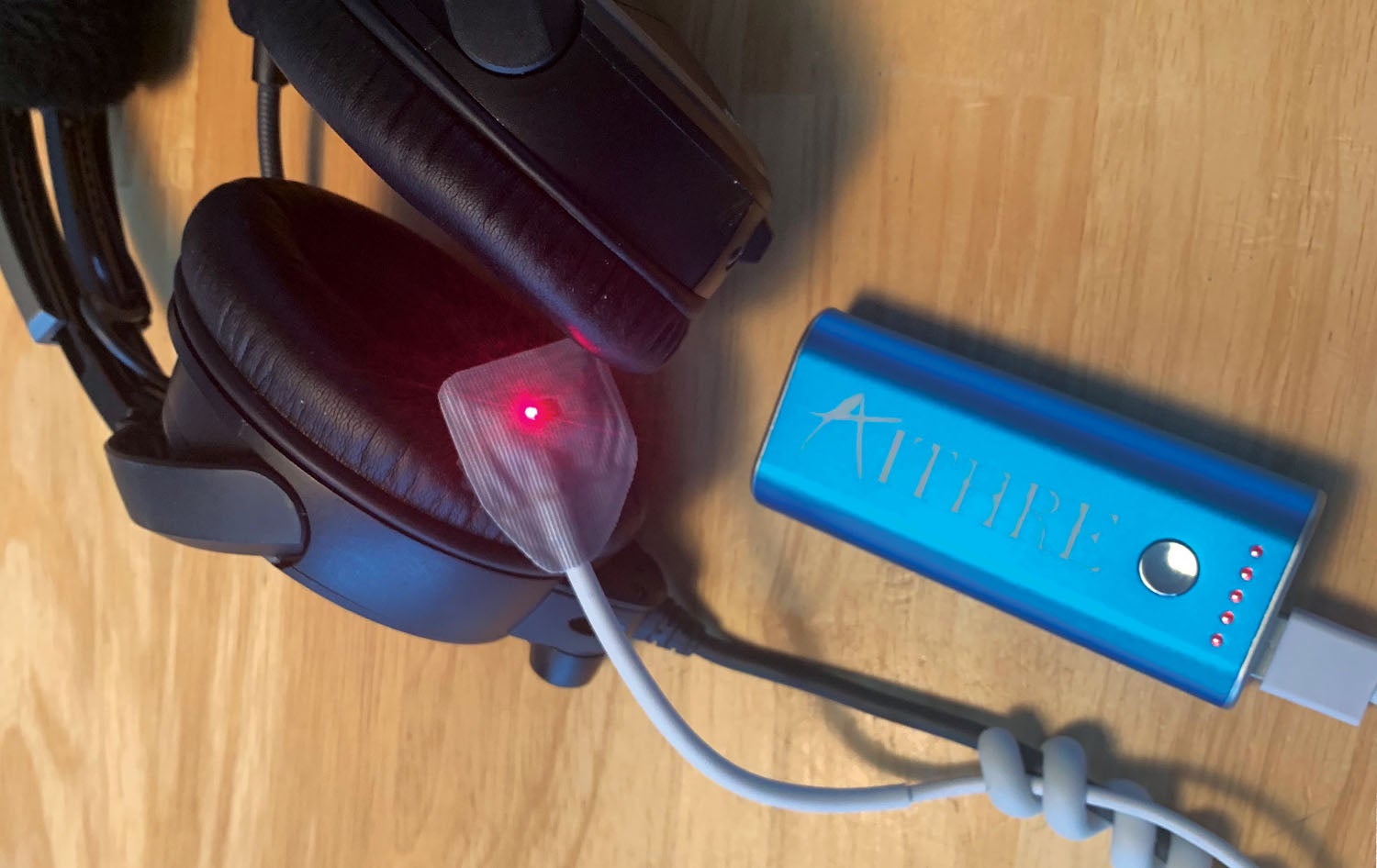 It took a high-altitude scare for Van’s RV-10 builder and Aithre founder Jim Rutler to develop an interesting new product that allows for full-time SpO2 monitoring and alerting. SpO2 is the shorthand way of describing oxygen saturation in the blood, a good way to know if you need to add supplemental oxygen or to descend during high-altitude flying.
It took a high-altitude scare for Van’s RV-10 builder and Aithre founder Jim Rutler to develop an interesting new product that allows for full-time SpO2 monitoring and alerting. SpO2 is the shorthand way of describing oxygen saturation in the blood, a good way to know if you need to add supplemental oxygen or to descend during high-altitude flying.
The Illyrian, which measures SpO2 under the earlobe with a sensor that attaches to a headset earcup (or the forehead with a sport wrap), is a bold departure from traditional finger pulse-ox devices. The Illyrian device got my attention while browsing the “innovations building” at last-year’s AirVenture because there has been a slow progression of gadgets for minding pilot and passenger health. Sure, finger pulse-ox devices get the job done, but they don’t allow for full-time monitoring. If you’re hypoxic, you might not have the smarts to take a sampling, plus there’s added workload when monitoring passengers. The Illyrian sensor, which uses a smartphone app for connecting with multiple sensors, solves the problem. I’ve been using the device for a couple of months—here’s a field report.
The Hardware
Need a quick review on pulse oximetry? No matter how it’s packaged, a sensor shines a visible red and an infrared beam of light (through the finger or toe, to name two bodily locations) to detect the changes in color of the arterial blood. Once the device computes, it displays the measured blood oxygen saturation level on a display. The Illyrian sensor is different only in that it measures below the earlobe or, if you wish, on the forehead while a sport headwrap keeps the sensor in place.
The main hardware consists of the SpO2 sensor, which has a built-in Bluetooth transmitter and antenna that sits in a small junction box on the bottom of the sensor’s cable. That’s a good design because it keeps the transmitting antenna away from the head. The sensor automatically pairs and streams the measured data to the smartphone without any user action—the whole idea behind the Illyrian.
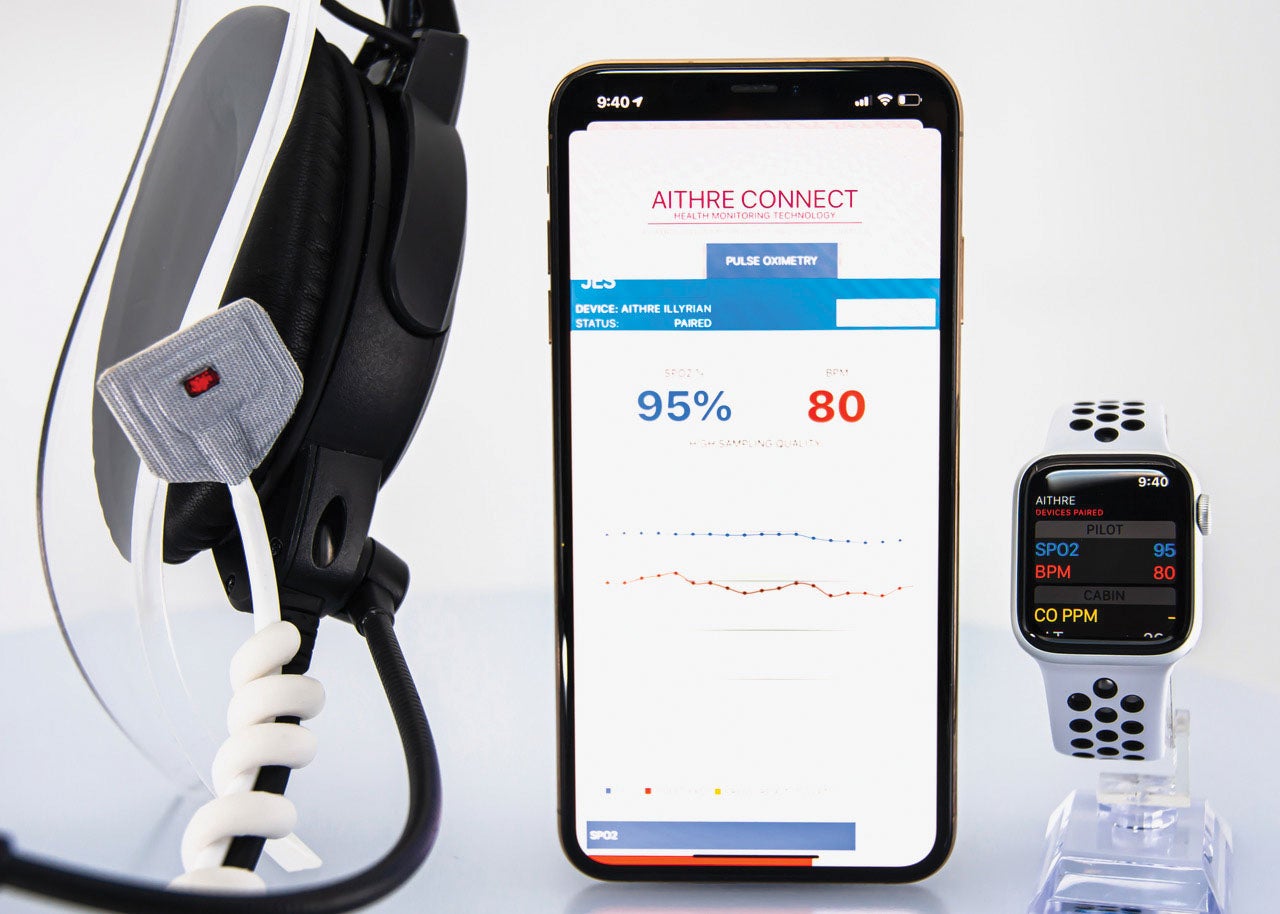
Since the system needs battery voltage to operate, it comes with a portable USB power bank, though you can plug it in to a panel USB power port if you don’t want to deal with the power supply. The power bank has minimal controls—a power button, five battery life indicators and a handy flashlight function. It’s charged via Micro-USB input and lasts a long time between charges. I’ve been using it for a couple of months during my trials, on a single charge. Not any portable power bank will do since the Illyrian draws so little current some smart power banks will power off, falsely sensing that nothing is connected. There’s roughly 38 inches of cable length to work with, from the base of the sensor to the base of the USB connector on the other end, so keep that in mind if you plan to plug it into ship’s USB power.
Using It
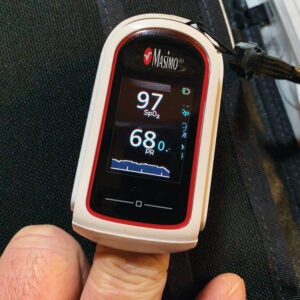
I evaluated the device with my Bose A20 headset, and included is a coil cable wrap for keeping the sensor’s interface cable intertwined with the headset’s down cable. These days I hate wired interfaces, and this one is tolerable—barely—with the coil cable wrap. I also evaluated the device with a Masimo MightySat—my go-to, high-accuracy pulse oximeter I’ve learned to rely on in the airplane and also for endurance cycling training. I also threw Garmin’s D2 Delta PX aviator’s watch in the mix. It has a wrist-based SpO2 and heart-rate sensor built into the watch’s chassis. What I’ve learned to like about it is its basic data display in the Garmin Pilot smartphone app, but I’ve also learned to accept its measuring limitations. The heart rate data lags, and the SpO2 measuring is finicky at best—accurate when it gets a clean sample, which it doesn’t always get.
The Illyrian’s readings (as measured under the earlobe) were consistently close to the Masimo’s finger measurements. Slapping the sensor on the forehead yielded good results, too, but admittedly not everyone will want to wear the headwrap to keep it in place. One caveat, says the company: Women and children might get inconsistent readings below the earlobe and I couldn’t substantiate this so far in my trials when passing it around the cabin.
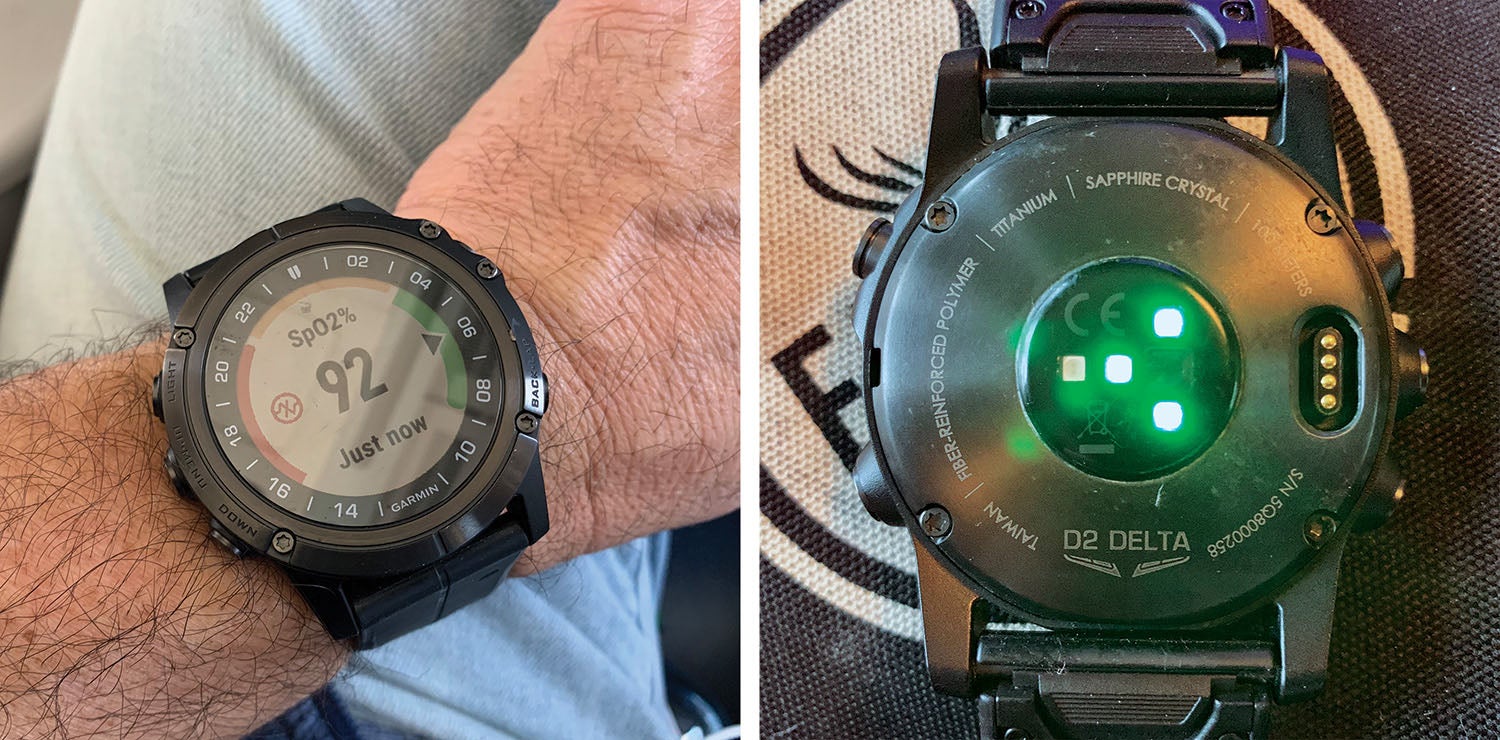
A Decent App
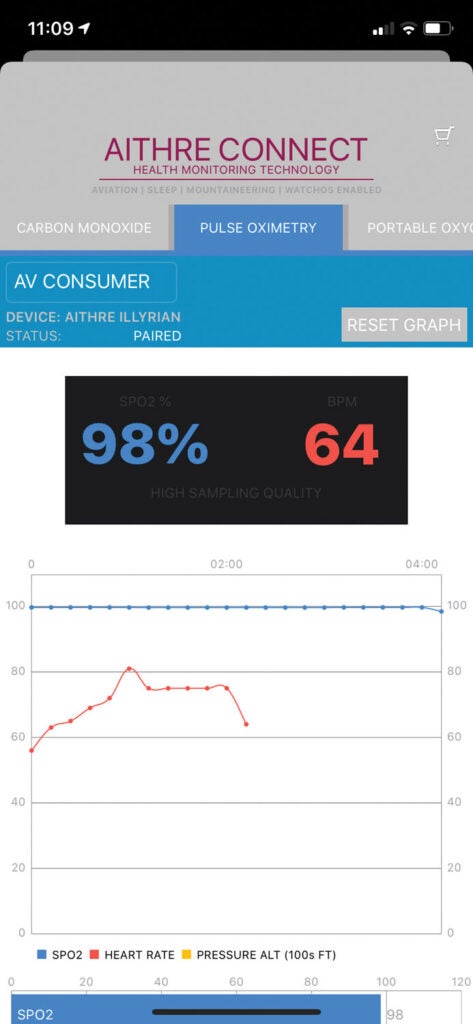
You monitor SpO2 on the Aithre Connect smartphone app, which is refreshingly simple and has a shallow menu structure. The Aithre Connect app can simultaneously connect with up to six Illyrian oximeters (that’s a huge workload reducer when flying high with passengers), and at press time the company was offering a 50% discount for a second oximeter. I like that the Aithre Connect app notes the sampling quality of the SpO2 and blood pressure readings below the displayed values. That means if you get a reading that doesn’t quite look right, you can dismiss it as a bum sample—and then adjust the sensor.
You start by turning the Apple Siri/popup notifications on in the app. For alerting, the default warnings trigger when the SpO2 drops below 92% and then again below 85%—which is indeed hypoxic. You can also specify custom SpO2 warning levels within the Settings tab of the app. But the app falls short in that the warnings are provided only once, “so as to avoid them being a nuisance,” says the instructions manual. I think that should be user-controlled and the company says it is working on that in a future release.
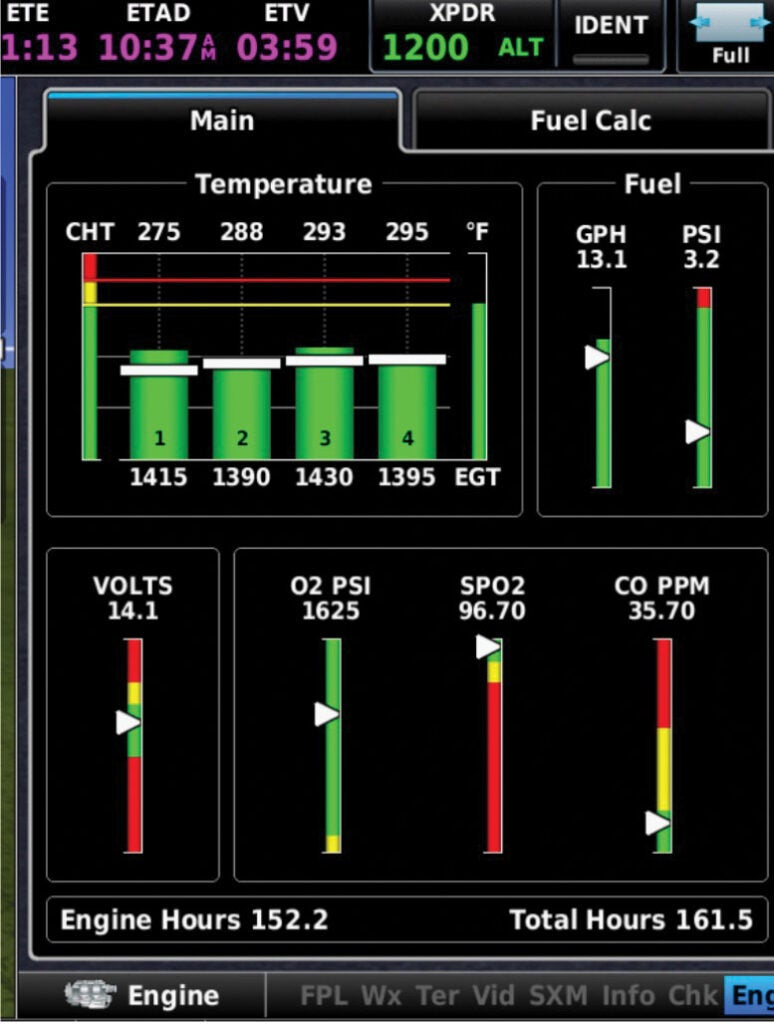
The app has an easy to decipher time-trend (up to 12 hours) graph for SpO2 and heart rate that’s overlaid against pressure altitude. The app is also interactive, offering regular hypoxia risk testing with custom interval quizzes. Wear an Apple Watch? It’ll come in handy with this device. The Aithre Connect iOS app includes a companion WatchOS app that tags along with the free download. It’s installed automatically on the Apple Watch once the iOS device downloads the Connect app. In turn, the WatchOS app will display the SpO2 and blood pressure automatically when the Illyrian is paired with the main iOS device. I don’t use an Apple Watch but for those who do, I think it will be more convenient than keeping the Aithre Connect app open all the time to monitor the biometrics data, though the app does work in the background. It doesn’t work with third-party apps and I’d like to see an interface with ForeFlight, Garmin Pilot and the Seattle FlyQ app, to name a few.
Speaking of third-party systems, the company at AirVenture was showing an onscreen biometrics interface with a Garmin G3X Touch display and an Advanced Flight Systems display. The interface uses the Aithre Shield EX 3.0—a device that’s integral to the company’s carbon monoxide and oxygen-tank pressure measuring systems, which also display on the Aithre Connect app. We’ll look at these worthwhile devices and their interfaces in a later issue.
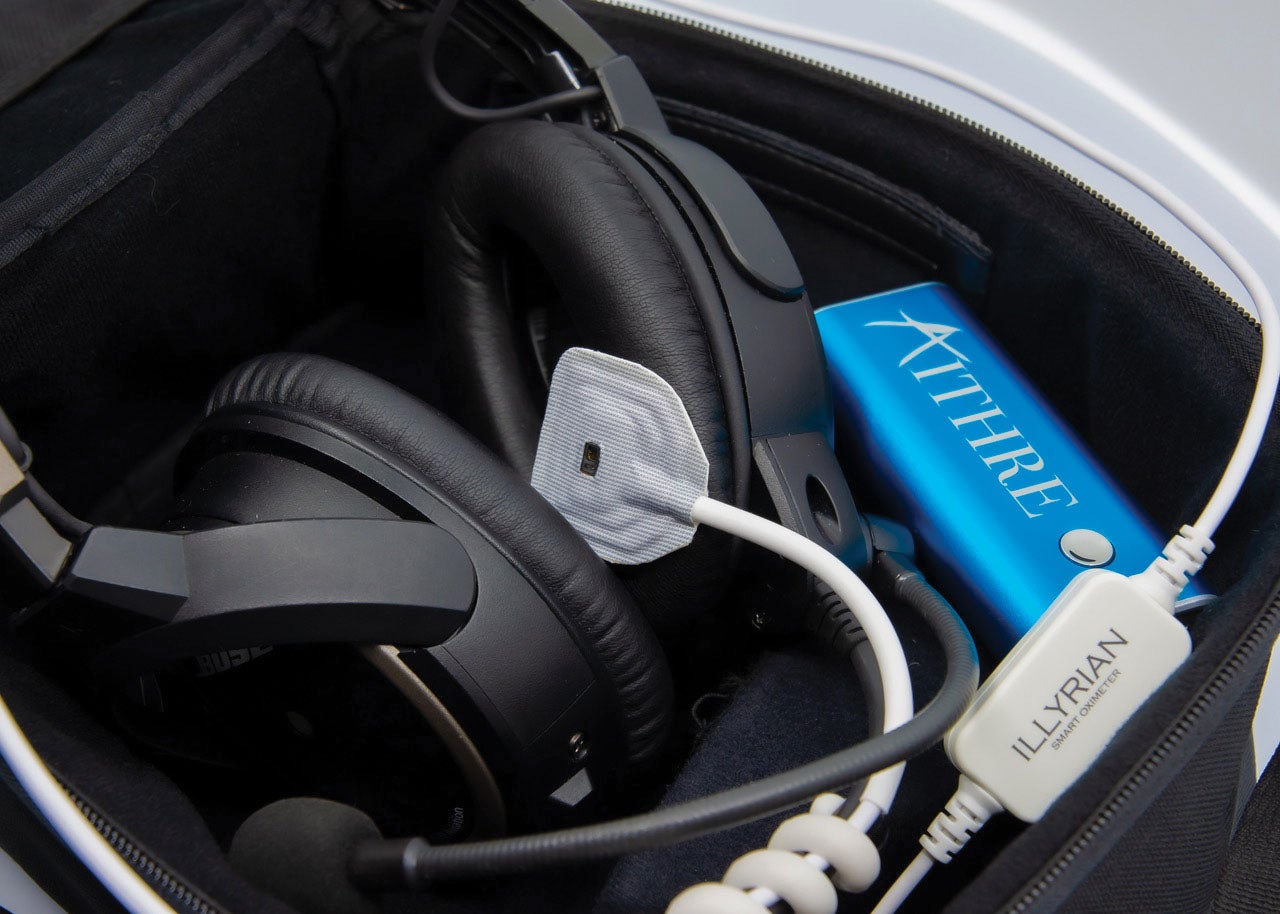
Fair Price, Good Performer
These are my surface observations after using the Illyrian and the accompanying app. Priced at $169 and now distributed by Sporty’s, Aircraft Spruce and Pilot Mall, to name a few, the device is simple and simplifies the chore of keeping tabs on your (and passengers’) SpO2 levels. Company founder Jim Rutler saw that exact need firsthand when he and his passengers ran out of oxygen in his RV-10 on a high-flying trip, something that could have ended with an NTSB report. “In my RV, I have so many advanced avionics including synthetic vision, I can precisely measure parameters down to the exhaust temperature in a cylinder and I have multiple ways to look at fuel flow, but on that one passenger-carrying trip I couldn’t effectively monitor the O2 supply and everyone’s blood-oxygen levels,” Rutler said. Warts and all, I think his Illyrian full-time pulse ox monitoring system is just the right backstop.
For more information, contact Aithre Aviation at 208-481-8310, or visit aithreaviation.com.
Photos: Larry Anglisano and courtesy of the manufacturer.













